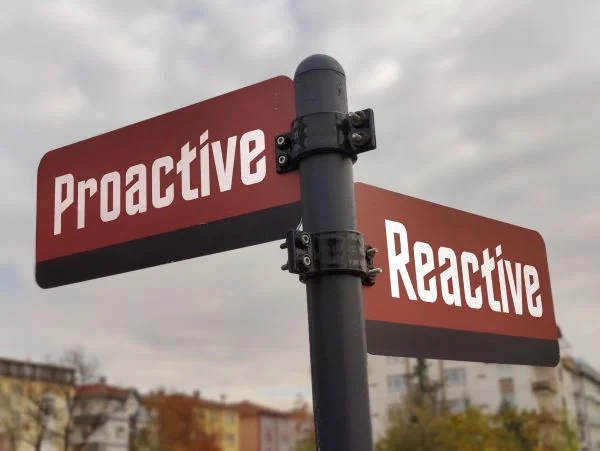Summary: Microlearning saves time and money by offering manageable, easy to maintain bites of learning in a virtual setting. It is also uniquely engaging. Using a rapidly paced, multimedia approach to training, microlearning has proven to improve retention and engagement with minimal disruption to workplace schedules.
Well before the pandemic, virtual microlearning was making major inroads into corporate training. Microlearning uses training modules that average around 10 minutes to cover just one or two topics. Served up anywhere at any time in manageable, web-based bites, microlearning has proven to be effective in helping employees learn and retain information with minimal disruption to workplace schedules.
With the pandemic, microlearning proved its value in supporting training for both remote and workplace-based workers. Without overwhelming employees with yet another big ask, virtual microlearning has proved particularly helpful for employee on-boarding, just-in-time training, and introductory skills and refresher courses to name a few popular uses.
Time and Money
As we edge our way towards a new normal, one of the biggest challenges to corporate training remains unchanged: Time. Employees resist the time away that training takes–adding another obligation to an overflowing plate and taking them away from their normal responsibilities. Companies risk a loss of productivity during time spent on training versus the eventual benefits of training. For many companies, it’s becoming harder and harder to pull employees out of the business for long, consecutive days of training.
Microlearning is successfully meeting the time challenge with bite-sized training modules that can be flexibly integrated into an employee’s schedule. Available at anytime and anywhere in the world via the web, microlearning is a virtual, global solution to the issue of time, as well as money. Virtual training eliminates the cost of travel, equipment and classrooms and can spread the cost of instructors, materials, and course development over a greater number of learners.
Learning and Retention
For many organizations who have embraced microlearning, the biggest advantage is that it works when done well. According to a study by Raytheon Professional Services, microlearning can improve long-term retention by 80 percent and over half of learners surveyed reported that they were able to spend more time learning when training was broken up in smaller modules. This approach eases learning for all types of learners making microlearning effective with every learning style.
Today’s microlearning isn’t only successful by staying small and virtual in order to save time and money. It also is uniquely engaging. If training isn’t engaging, learners lose motivation. From the free, online, college of MOOCs, to video training series, from live on-line training to the quickly devised Zoom classrooms of the pandemic; again and again, learner engagement has proven to be the greatest challenge for virtual learning. Results are mixed at best. Too often it is easy to disengage when you sit alone without face-to-face instruction from a living, breathing instructor.
The latest iteration of microlearning meets this challenge head on, not only with smaller information bites but also with a diverse, multimedia approach. Training is designed to engage learners by using the rapidly changing videos and image-based graphic content style of Instagram and YouTube; the bites of text like Twitter, the social interaction opportunities of video conferencing and chats, and the fun, innovative challenges of gamification (the use of game design elements and principles) and simulations (think airline pilot training).
While games and videos are usually linked to GenY and GenZ learners, the diversity of media and brevity of modules has proven successful across generations. These multimedia experiences build engagement while delivering content. Not only do learners stay engaged they also are more willing to move on to the next module and continue to learn.
Microlearning Example: Kepner-Tregoe Learning Path
The KT Problem Solving Learning Path uses a microlearning-oriented approach to introduce two of Kepner-Tregoe’s acclaimed rational thinking processes, Situation Appraisal and Problem Analysis.
Situation Appraisal (SA) is a useful tool for evaluating what is going on in order to gain control and consider the best path forward. Problem Analysis (PA) is a process approach to understanding why something went wrong and how to resolve it. They are systematic processes that cut through information and data to set priorities and resolve issues.
KT’s Learning Path uses a fast-paced combination of graphics, video animation, games, quizzes, and video presentations by instructors and experts to develop and apply new skills. To further increase engagement and deepen understanding, the modules are complemented with coaching presented through live video conferencing. To take full advantage of coaching opportunities, organizations are encouraged to offer training to cohorts within the organization. Learners work asynchronously but have opportunities to meet up in real time video conferencing with their colleagues and with the coach.
With microlearning, the learner is carefully guided along the SA and PA processes, building understanding and capability with each new bite of content. The program is relevant for both remote and workplace-based learners by providing critical thinking skills training that is immediately relevant to on-the-job application.
The Learning Path can be a refresher or an introduction to KT’s Problem Solving & Decision Making concepts. The KT Learning Path also supports high-demand corporate programs such as employee onboarding, introductory critical thinking skill development and customer support training by providing employees with a rational approach to setting priorities and a common language for issue resolution that supports analytic problem solving.
While not all topics work best with microlearning, as an introduction or refresher for high-value skills, the KT Learning Path is a Brandon-Hall award-winning program that has proven highly engaging and particularly well suited for effectively and efficiently scaling critical thinking skills to distributed teams.
About Kepner-Tregoe
Kepner-Tregoe offers consulting and training based on ground-breaking research on how people think, solve problems, and make decisions. With offices worldwide, Kepner-Tregoe helps manufacturing operations, as well as service and support organizations, to pursue excellence by improving quality, increasing efficiency, and reducing costs. For additional information, visit kepner-tregoe.com or Kepner-Tregoe social media platforms on LinkedIn, Twitter, Facebook and YouTube.



